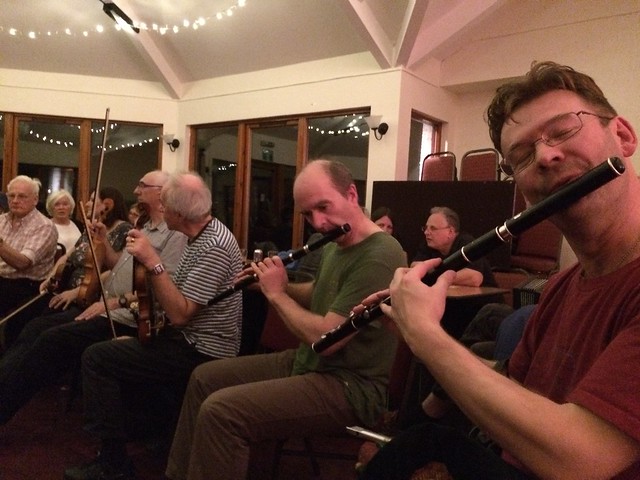 The final tune of the term is Chief O’Neill’s Favourite, named after the influential collector and publisher of Irish traditional music who was also the Chief of the Chicago police force.
The final tune of the term is Chief O’Neill’s Favourite, named after the influential collector and publisher of Irish traditional music who was also the Chief of the Chicago police force.
He played flute, pipes and fiddle and not only wrote about his collecting activities but has been the subject of books and even a play. More on him on Wikipedia. This particular tune came from fiddler Edward Cronin of County Tipperary who had no name for it so dedicated it to O’Neill.
Shifting modes and keys
I was confused about the version that I know, which contains some F naturals in the B part and swings between C# and C natural throughout. O’Neill’s original version has two sharps throughout but Geraldine Cotter’s has some C naturals and sharps, but with the F always sharp. The version we looked at is a mixture between Geraldine Cotter’s and one published in Music for the Sets — the yellow book*. Be aware that people may play this one way or the other, critically in the opening of the B part, so it’s good to confirm beforehand.
(*The Session.org has some discussion on this series of excellently played music for set dancing and the cassettes and books that came from them. It may be possible to download copies of the tapes from this site.)
Resources
So how to play that F natural?
On a keyed flute it is fairly straightforward, although maybe not with a short F key. The lead-in notes are D and E. To play the F natural short key, you’ll need to move the E finger out of position to access the key and in so doing you’ll play F#. This is why the long F natural key was developed.
To get around the problem, you’ll have to tongue or stop the E a little short to allow you to swiftly move the finger without playing a note. Alternatively, skip the E altogether and take a breath there while moving your finger into position.
For whistles and keyless flutes it is much more of a problem and requires advanced teachnique. The standard ways of flattening a note are to “half hole” or veil the hole. Experiment finding the best way of doing this with a tuner. In the class we found the large hole needed to be maybe 80-90% covered by the E finger. You can rock the finger sideways or slightly draw it back. Either way it is not a strong note and nor is it accurate.
You could try flattening the F# a few more percentage points by leaving the D finger down in position, but it is still not satisfactory. You will have to experiment with both of these approaches and find the best compromise. On the fly, either option is hard to execute and takes practice.
Image: Francis O’Neill, via Wikipedia, some rights reserved.
 The new dates for the term can now be found on the Diary page and the Booking form has been updated too.
The new dates for the term can now be found on the Diary page and the Booking form has been updated too.

 This week we covered the Laridé de Portobello, a nine-part piece for flutes, whistles and other folk instruments based on a traditional Breton two-part tune that had no name. This is a tune I have taught previously and the intention of the multiple parts is to encourage group play, improvisation and performance. With the end of a term of hard work coming up, it’s good to focus on such things.
This week we covered the Laridé de Portobello, a nine-part piece for flutes, whistles and other folk instruments based on a traditional Breton two-part tune that had no name. This is a tune I have taught previously and the intention of the multiple parts is to encourage group play, improvisation and performance. With the end of a term of hard work coming up, it’s good to focus on such things.

